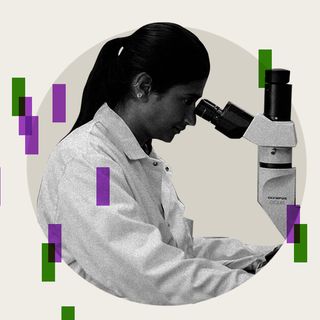You’ve heard of the creepy superpower that geckos are bestowed with: the ability to regrow their tails. Hydras can regrow heads, and some salamanders, crabs, and lizards can regrow lost limbs. Flatworms become entirely new organisms with each piece that is “chopped” off. But what all of these amazing capabilities have in common is that they occur naturally, without any external intervention.
Now, scientists were able to administer a cocktail of drugs to an African clawed frog — a creature that doesn’t possess this ability naturally — to help regrow an amputated leg. It worked after a miraculously short period of exposure to the drug: 24 hours of treatment prompted an 18-month–long process of regrowth of a brand new, functional limb.
Scientists are calling this a significant advance for regenerative medicine. Published this week in Science Advances, the paper detailing the study states that “Limb regeneration is a frontier in biomedical science. Identifying triggers… to induce the growth of healthy patterned tissue would address the needs of millions of patients, from diabetics to victims of trauma.” This is significant since, as the study’s authors also note, prosthetics only restore limited functionality to patients who lose limbs.
The frog’s leg was amputated and the wound was encased in a silicon cap containing a five-drug cocktail. This particular species’ “limited regenerative capacities” mirror that of humans, the paper notes — making it a suitable candidate to study the potential of unlocking these capacities in humans as well. So far, wounds in humans quickly develop scar tissue that protects us from blood loss and infection, but also prevents regenerative growth. We do have some regenerative capacities, however: halved livers can regrow to their full sizes.
When the experiment was repeated with other frogs, all of them regrew a nearly complete limb with bones, nerves, and even toes by the end of the experiment.
Related on The Swaddle:
Why Hydras Have the ‘Freaky’ Ability to Grow Their Heads Back
“It’s exciting to see that the drugs we selected were helping to create an almost complete limb,” Nirosha Murugan from Tufts University in Massachusetts, and first author of the paper, toldThe Guardian
Scientists believe that we may have a “dormant” ability to regrow lost limbs or body parts. This hypothesis in frogs was confirmed when they observed that molecular pathways used to grow limbs in the embryo stage were activated once more in the frogs a few days after the treatment.
Naturally, regrowing limbs involves a host of complex factors: “appropriate wound management, regulation of inflammation, induction of growth, promotion of tissue repatterning, and a cessation of growth and remodeling at the appropriate time.” Trying to achieve these manually would be next to impossible; instead, what scientists have tried to achieve in this experiment, is to trigger a dormant or innate regenerative capacity that could kickstart the process organically. The five-drug cocktail evidently contained all the necessary ingredients required to send the requisite signals across.
“We also observed long-term growth and significant tissue repatterning that was self-sustaining. The brief intervention had long-term consequences… Our collective data suggest that early targeted interventions may shift the burden of regeneration to the limb itself, sidestepping reliance on longer-term therapeutic strategies like the use of stem cells, serialized treatments, and other means of persistent micromanagement of restorative growth and patterning,” the researchers wrote.
For now, scientists across the board are excited at the medical potential this could offer beyond just limb regrowth. “The results are highly intriguing for human regenerative medicine, beyond just their implications for the limb,” Michael Schneider, a professor in cardiology at Imperial College London, told The Guardian, adding that regeneration could apply even toward scarless healing after heart attacks.




